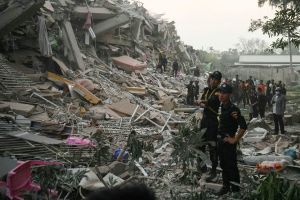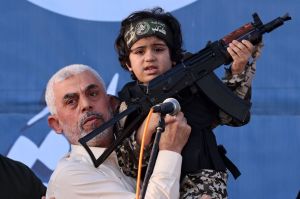'Finishing the task': Misconceptions about Christian missions to the unreached

In the aftermath of American missionary John Chau's controversial death, mission agencies and scholars are refuting misconceptions that have emerged about the way the Gospel is being brought to the world’s most unreached communities.
While Western missionaries are part of the effort to fulfill the Great Commission, the predominant manner in which unreached people groups and tribes worldwide are being presented with the Gospel is through people who have more culturally in common with them than your average foreign missionary.
To reach them, the Lord is using people like Greg Buckingham, a layperson who spearheaded a California megachurch’s mission to bring the Good News to an ethnic minority group located in the mountainous terrain of Myanmar.
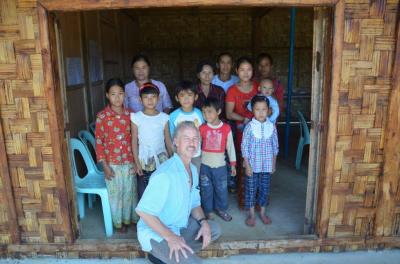
Buckingham is not a pastor or an evangelist with extensive biblical education who spent years in mission training to bring the Gospel to the lost. Rather, he's a businessman whose skills God used to bridge a gap between the biblically unengaged and unreached Rumai Palaung community in the Shan state with a local pastor hungry to show the predominantly Buddhist people group the love and grace of Jesus Christ.
A community that was once considered to be unengaged with Christianity, the Rumai Palaung in the Shan state now have their own vibrant church community thanks to the efforts of leaders and missionaries from Coast Hills Church in Aliso Viejo, California — an effort that began in 2008.
But the way in which Buckingham and the Coast Hills team went about bringing the Gospel to that community was not by going themselves to encounter the Rumai Palaung. Rather, it was centered on empowering the local Baptist church and pastor in that region to bring the Gospel to the ethnic community located in their own backyard.
Coast Hills’ method was in line with the way most global mission work is being done today to fulfill the Great Commission.
“The one thing that Christian mission history has taught us is that the best evangelists are folks who belong to the same people as themselves,” Arun Jones, the Dan and Lillian Hankey associate professor of world evangelism at Emory University’s Candler School of Theology and a former Methodist missionary, told The Christian Post.
“John Allen Chau really is quite unique. That is not how things work, even in evangelical circles,” Jones added, suggesting that the era of “solo-pioneer” missionaries from the West is just about over.
“The vast majority of evangelical groups are partnering with evangelicals around the world. It really needs to be a joint effort. Because there are resources we have that can be helpful but we do need the wisdom of the local people to help and guide us in terms of how we can work together to best proclaim the Gospel of Jesus Christ.”
The historical narrative of missionaries being white colonialists in pith helmets is "anachronistic," according to Jones, and “it doesn’t belong to the 21st century.”
The way global missions is done today is different than the way it was done in the 19th or early 20th centuries as national churches in the undeveloped parts of the world have grown in strength over the last several decades and are now capable of leading their own efforts to reach the lost people groups in their regions.
'Finishing the Task'
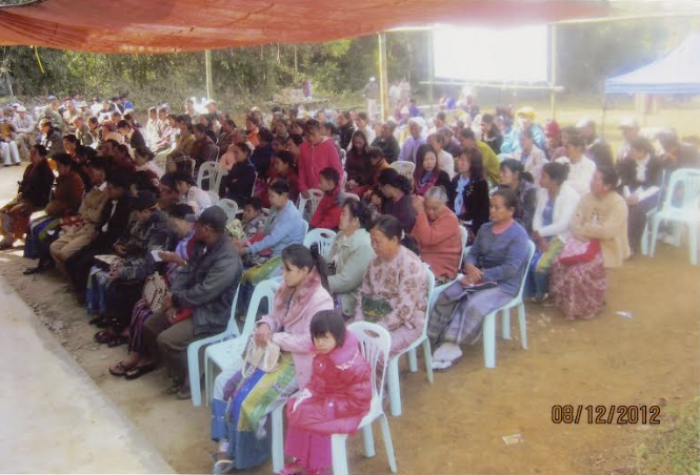
Today, there are at least 343 people groups throughout the world with populations of 500 or more where there are no known church planting movements present. This is according to the nondenominational missionary coalition Finishing the Task.
Finishing the Task was first launched in the mid-2000s as a global network of churches, denominations, church planters and mission agencies that have committed to planting churches in communities that are considered to be “unengaged, unreached people groups” (UUPG).
Finishing the Task defines UUPGs as communities where no missionary agency or church has yet taken responsibility to start church planting efforts.
Although 343 UUPGs might seem like a lot, there were 4,000 people groups with no known Bible movements present over 13 years ago when Finishing the Task first began.
But since then, 382 churches, missionary agencies, and other organizations have committed to launching their own efforts to bring the Gospel to one or more of the groups highlighted on the network’s UUPG list.
Finishing the Task Director Paul Eshleman told CP that the list was compiled by looking at research done by organizations like the Southern Baptist Convention’s International Missions Board.
“We just decided to start with every people group over 100,000,” Eshleman explained. “In 2005, there was about 639 groups with about 700 million population of the groups. We just began to challenge one another and have a meeting each year and everybody would report on which groups they got engaged. We try to work on common systems of measurement so that we were measuring the same thing.”
The movement has grown rapidly in the decade-plus and has led to the placement of as many as 4,766 missionary teams (over 28,000 missionaries) worldwide, which have planted at least 136,556 churches in UUPG communities. As many as 2,800 people groups have been engaged with full-time workers.
“We wanted to always have a major list in front of people. So we lowered it after we got most of the 100,000-plus groups engaged,” Eshleman said. “We lowered it to groups with 50,000 [population] then to 25,000, then to 10,000 and so we are down to 500 right now. We’ll keep dropping as people sign up to go there.”
According to Finishing the Task, 80 percent of the missionaries that are sent to directly evangelize with these groups are local missionaries or those who have a closer cultural upbringing to that of the target people group.
It was through Finishing the Task that Buckingham and Coast Hills found out about the need to bring the Gospel to the Rumai Palaung people in Myanmar, an impoverished farming community of over 100,000 where there was believed to be no known church planting movement present.
Today, there are hundreds of Rumai Palaung believers in Christ. There are also at least two house churches and one physical church building within the Rumai Palaung community in the Shan state, according to Buckingham. This would not have been possible if it weren't for the partnership Coast Hills had with Campus Crusade and the Wa Baptist Church in Lashio.
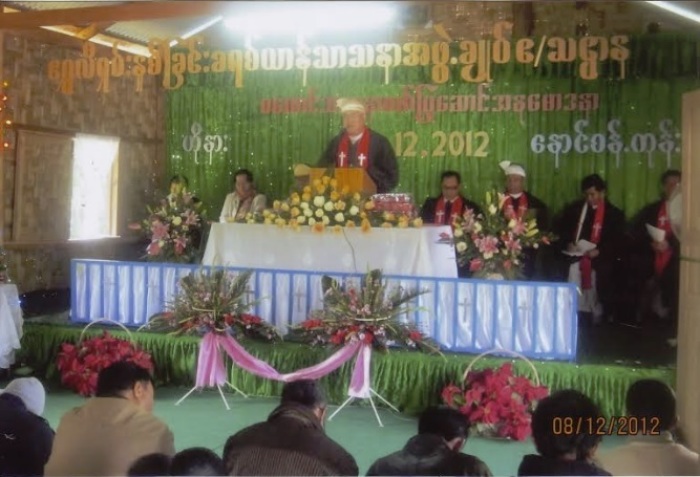
The partnership formed thanks to an unexpected visit Buckingham made to a local orphanage.
"When we got up to Lashio [for the first time], which was our home base, we partnered with an elder board with the Wa church," Buckingham told CP. "We knew where we had to go to reach the people and then the thing was how to figure out the strategies to go. We used the “Jesus” film as one of our strategies and then we found a pastor up there. He was great. We trained him up and we equipped him with the “Jesus” film and different things. He kind of led the way. Some of the people he pastored were Rumai Palaung. That is how they planted that church up there.”
Coast Hills offered financial support and strategic advice for the pastor and those who were on the front lines trying to spread the Gospel to the Rumai Palaung.
“The first ‘Jesus’ film that we had, they were just shotgunning it all over the place and they would have chiefs that would kick them out [of the village] and stuff like that. The education level was minimal. It’s not like it is in the United States,” Buckingham detailed. “We asked, ‘Do you have a friendly village? Why don’t you make that your hub and then go out to the different villages to build relationships through people in those villages and start to work that way instead of the shotgun approach? We just helped them form those strategies and kept increasing.”
Just as Coast Hills partnered with the Wa Bible Church, Matt Kirkas, the Southeast Asia director for Partners International, a nonprofit that partners with national churches and other local mission agencies to bring the Gospel to hundreds of unreached people groups across the 10/40 window, says the future of mission efforts to unreached groups will be through indigenous national churches.
“An important shift has been in the area that the national church has begun to grow a mission vision of their own,” Kirkas explained. “So for example, when I first came to [Southeast Asia] there was very little information about unreached people groups, very little research data, as well as church leaders talking about it. That has changed considerably and now we have networks and meetings and consultations, which raise the profile of the remaining people groups in their countries that need to be reached with the Gospel.”
Kirkas said the “best illustration” for the way global missions to the unreached is being carried out today is by comparing it to how the United States fought the war against the Islamic State.
“The way we fight wars today is we come to Kurdistan and we collaborated with Kurdish fighters there. What do we do? We don’t have American troops shooting the guns, we actually put special forces in there to help them plan a raid, to train their soldiers, to call in air support when you might need it,” Kirkas said. “That is a bit what we are seeing today in missions as well because the national church has grown and matured and has people now that are called to engage unreached people.”
The unreached groups are categorically different than “unengaged unreached people groups.”
The common definition of an unreached people group and the one used by the Joshua Project is a community where less than 2 percent of the population are authentic Christ followers. This is not to be confused with Finishing the Task’s definition of UUPG, where there is absolutely no missionary agency or church organizing church planting efforts in that community.
According to the Joshua Project, there are over 7,000 unreached people groups (less than 2 percent Christian) worldwide today.
Bringing the Gospel to “unreached” populations is important because of the fact that there are as many as 2.1 billion “unevangelized” people in the world today, according to Greg Kelley, head of the U.S.-based nonprofit World Mission. World Mission is part of the Alliance for the Unreached.
“The demographic trends and the lack of prioritizing these areas is causing the number of unevangelized to increase. If it is 2.1 billion unevangelized today, what they say is by 2025, there will be an additional 165 million,” Kelley told CP. “Meanwhile, the Church is sending out more Bibles and the church is sending out more missionaries and more money but that number is increasing. What does that tell you? We are prioritizing the wrong thing.”
Follow Samuel Smith on Twitter: @IamSamSmith
or Facebook: SamuelSmithCP
















